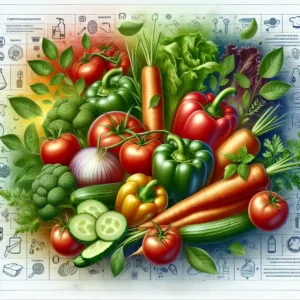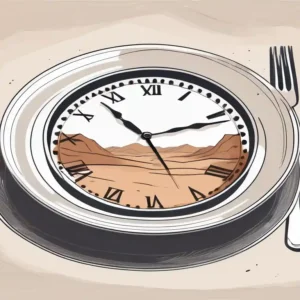
Step-by-Step: How to Clean Your Cast Iron Skillet
Imagine a trusty tool in the kitchen that only gets better with age: the cast iron skillet. Treasuring this culinary heirloom demands understanding its unique maintenance regimen. Cast iron requires an unconventional approach to care, vastly differing from modern nonstick counterparts. This article demystifies the process, providing a comprehensive guide to keeping your skillet in prime condition. From everyday upkeep to tackling the most obstinate stains and rust, we cover it all. Learn the insider’s routine for seasoning and the restoration tactics for those who’ve pushed their skillet to the brink. Lastly, we’ll explore the nuances of enameled cast iron and answer your most pressing questions, ensuring your skillet continues to impart its signature flavor and thrive for generations. Why cleaning and maintaining a cast iron skillet is important Cleaning and maintaining your cast iron skillet is essential for several reasons. First and foremost, proper care preserves the skillet’s seasoning—a thin layer of oil that has baked into the cookware. This seasoning is responsible for the cast iron’s signature non-stick quality and also helps to prevent rusting and corrosion. Using a cast iron skillet, the even heat distribution on the cooking surface is crucial for achieving consistent cooking results. Without regular maintenance, the skillet’s performance could decline. Harsh cleaning methods, including the use of dishwashers, soap, or steel wool, can strip the pan’s seasoning, reducing its non-stick properties and leading to food sticking and burning. When cleaning your skillet, simple tools like a paper towel, warm water, and a Wooden spatula are preferable. For stubborn, stuck-on food bits, a paste made from coarse kosher salt and water can be gently used to scrub the pan without damaging its seasoning. Cast iron requires a protective layer of oil after each cleaning to keep it in optimal condition. Neglecting the proper care of your cast iron can result in a rusty, less functional pan, diminishing its longevity and the quality of the food you cook. Regular cleaning ensures your seasoned cast iron skillet remains a versatile and durable asset in your kitchen. Everyday Cleaning and Seasoning Cast iron cookware, particularly skillets, is favored for its durability and improvement over time—provided it is cared for correctly. Every cast iron skillet should be promptly cleaned after use. Rather than employing harsh soaps or abrasive scrubbers, which can strip away the pan’s precious seasoning, daily maintenance can be as simple as wiping the skillet with a paper towel or rinsing it with hot water. After each use, maintaining the skillet’s seasoning is crucial for ensuring a quality non-stick cooking surface and is accomplished by rubbing a small amount of oil into the pan. By routinely seasoning your cast iron skillet and not just after heavy-duty cleaning, this procedure builds the non-stick qualities and keeps rust at bay. Remember, seasoning is not a one-time process; it’s ongoing maintenance. The more regularly you use the skillet, the stronger the seasoning becomes. This not only enhances the non-stick characteristic but also forms an effective barrier preventing rust. Cleaning with hot water and a mild sponge, followed by complete drying, will ensure your cast iron skillet remains rust-free and continues to improve with age. Scrub off stuck-on food with hot water and a nylon brush For those occasions when bits of food stubbornly cling to your pan, refrain from soaking the skillet, which can lead to rust formation and impact the pan’s longevity. Instead, utilize hot water combined with a non-abrasive nylon scrubbing brush to gently remove any stuck-on food. This method safeguards the skillet’s seasoned surface. It’s best to tackle this cleaning while the skillet is still warm—just be cautious to prevent burns. Fill the pan with warm water immediately after cooking, and let it sit for a couple of minutes to loosen the food bits. Then, using the nylon brush, gently scrub the warm cast iron skillet to lift away any residue. Remember, the goal is to preserve the integrity of the skillet’s seasoning, so gentle and patient scrubbing here will go a long way towards maintaining your pan’s coveted properties. Dry the skillet thoroughly Once washing is completed, it’s imperative to dry your cast iron skillet thoroughly to prevent rust and maintain its quality. Use a clean, lint-free cloth or paper towel to wipe down every inch—inside and out. Don’t overlook any pooled water in the rim or handle crevices, as this can cause rust spots to form. If residual moisture remains or you want to be extra sure it’s dry, place the skillet over low to medium heat on the stove for a few minutes. This will evaporate any remaining water droplets and ensure the skillet is completely dry. Always remember, allowing it to air dry is not sufficient, and thorough manual drying is essential in keeping your treasured cast iron pan in prime condition. Apply a thin layer of oil or fat to season the skillet Once the skillet is completely dry, it’s time to protect its seasoning. Applying a thin coat of oil or fat ensures the skillet remains non-sticky and rust-free. Ideally, use an oil with a high smoke point like vegetable oil or flaxseed oil. This is also a good opportunity to use products specifically designed for cast iron care, such as Seasoning Spray or other cooking oils suitable for high-heat cooking. Pour a small amount into the skillet and use a clean paper towel or dish towel to rub it in, coating the cooking surface thoroughly. It’s crucial to keep this layer thin; a thick coat can lead to a sticky residue upon your next use. Extend this coating to all parts of the skillet, including the bottom and handle. Finally, to remove any excess, give the skillet another wipe with a fresh paper towel. This step not only protects your skillet but also contributes to a patina that enhances with each use. Store the skillet in a dry place until its next use, and it will be ready for your cooking adventures time and time again. By maintaining







